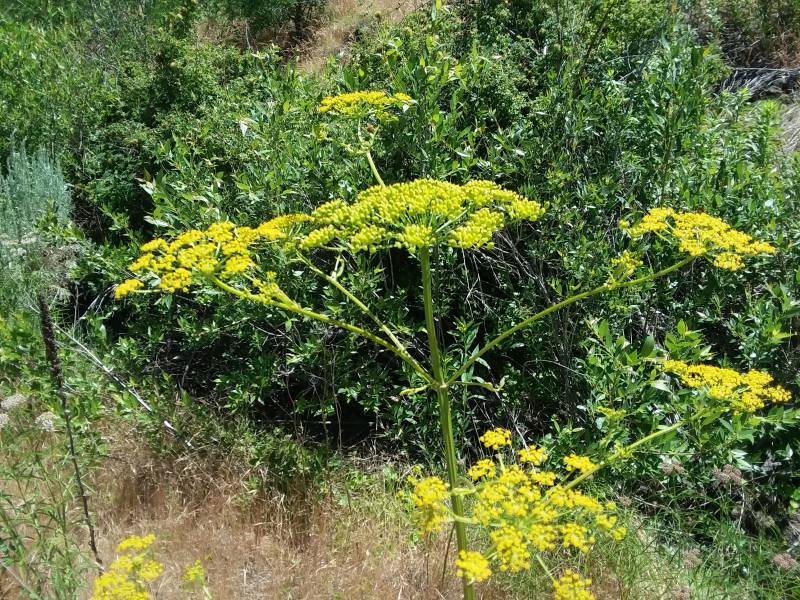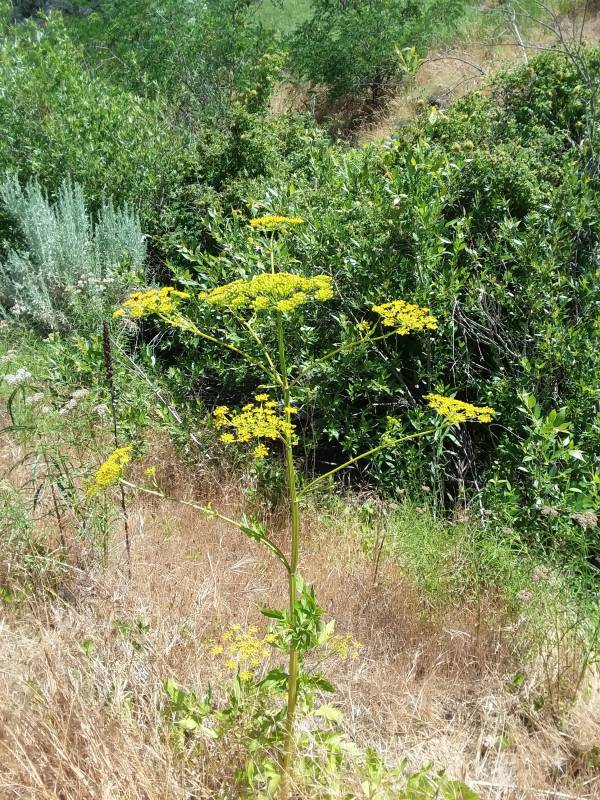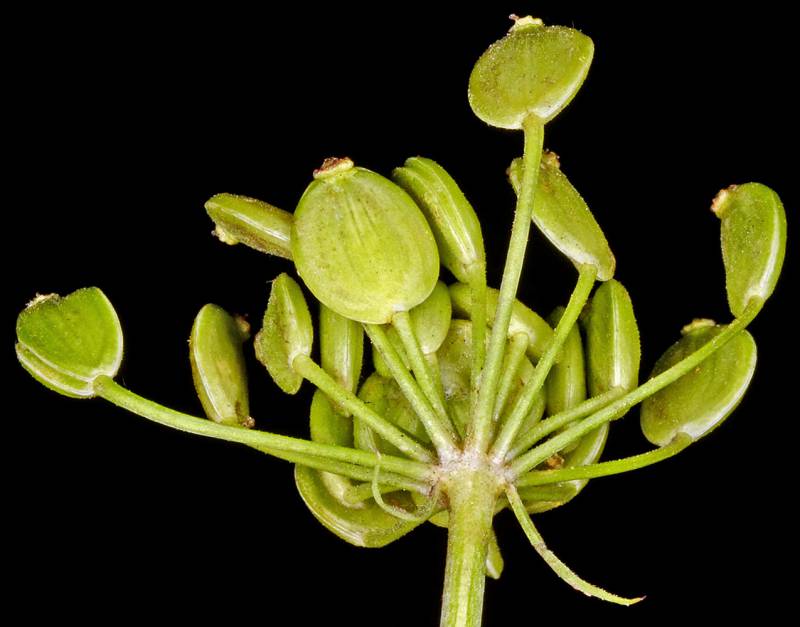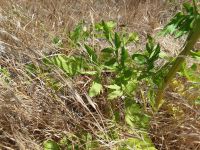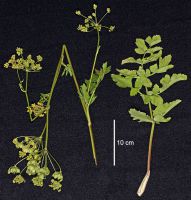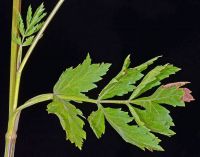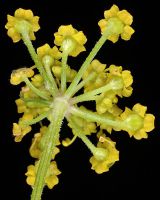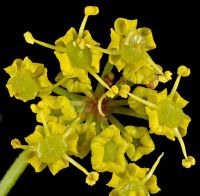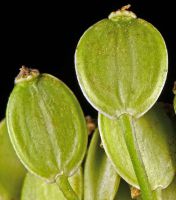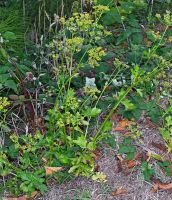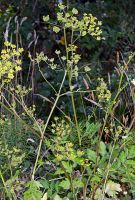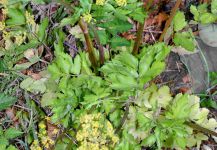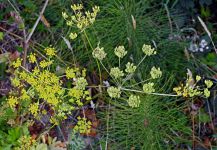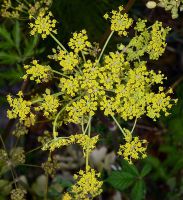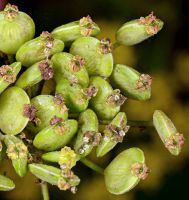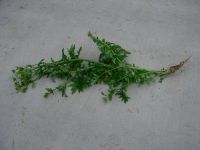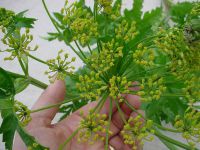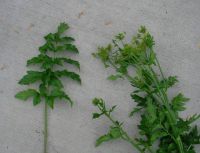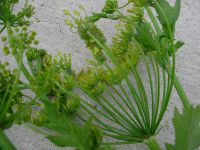Distribution: Occurring in scattered locations on both sides of the Cascades crest in Washington; Alaska to California, east across North America to the Atlantic Coast.
Habitat: Roadsides, fields, ditches, wastelots, and other disturbed sites at low elevations.
Flowers: May-July
Origin: Introduced from Europe
Growth Duration: Biennial
Conservation Status: Not of concern
Pollination: Generalist
Stout, leafy-stemmed, aromatic biennial from a stout taproot, 3-10 dm. tall.
Leaves pinnately compound; basal leaves up to 5 dm. long and nearly half as wide, the leaflets up to 13 cm. long and 10 cm. wide, toothed, or the lower cleft or lobed; cauline leaves progressively reduced upward.
Inflorescence of compound umbels on terminal and lateral peduncles; rays 15-25, unequal, 2-10 cm. long; involucre and involucel wanting; calyx teeth obsolete; flowers yellow.
Fruit glabrous, broadly elliptic, 5-6 mm. long and 4-5 mm. wide, strongly flattened dorsally; lateral wings narrow, dorsal ribs filiform.
Publication: Sp. Pl. 1: 262. 1753.
PNW Herbaria: Specimen records of Pastinaca sativa in the Consortium of Pacific Northwest Herbaria database
WA Flora Checklist: Pastinaca sativa checklist entry
OregonFlora: Pastinaca sativa information
E-Flora BC: Pastinaca sativa atlas page
CalPhotos: Pastinaca sativa photos

